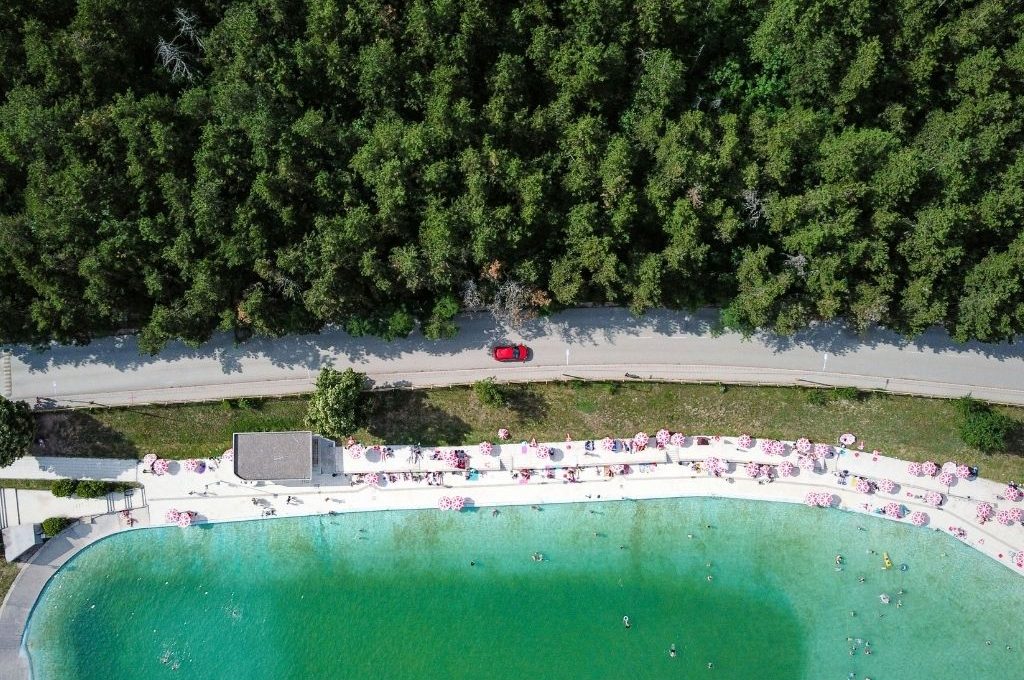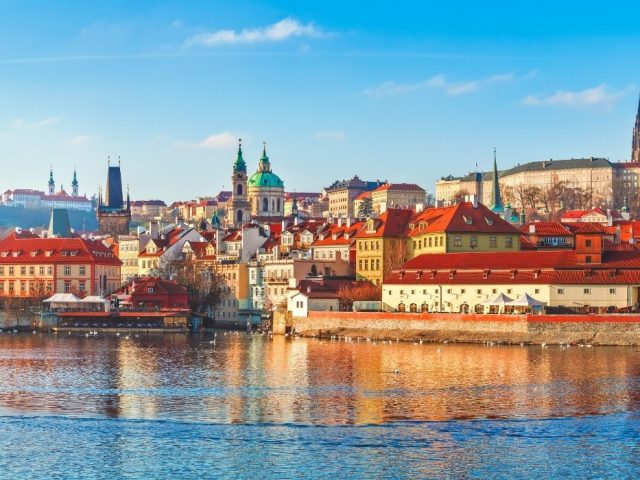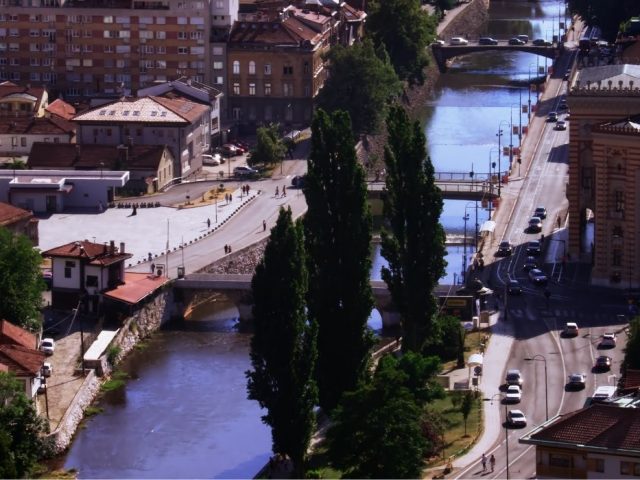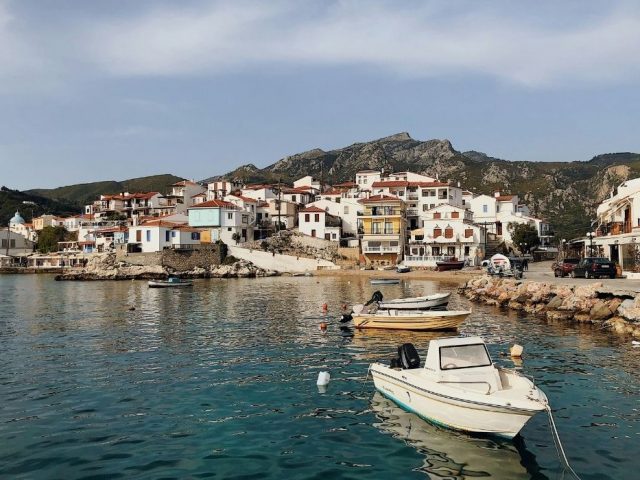Pristina is the apple of Kosovo’s eye, being the capital of Europe’s youngest country, Kosovo. It represents the rich culture of Kosovo. It stands as a silent witness to many turbulent historical events of Kosovo from the Roman period to the Ottoman era. Pristina offers every traveler an emotional yet equally enjoyable experience with its museums, sculptures, and streets where history is written.
By the way, two names we know and love from the music world are Albanian. Rita Ora was born here in Pristina. Dua Lipa’s parents are Albanian. Did you know that Dua Lipa and her father organize a festival together? It’s called The Sunny Hill Festival. It started in 2018 but was canceled in 2020 and 2021 due to the COVID-19 pandemic. Unfortunately, it didn’t happen in 2023 either. You can follow the festival dates on the internet.
Before starting the article, let’s remind you: Don’t forget to download the Piri Guide mobile app to explore Pristina step by step with your personal and digital tour guide! 😊
Where is Pristina?
Pristina is situated in the heart of the Balkans, serving as the capital and largest city of Kosovo. It is located to the west of the Black Sea and in the center of the Balkan Peninsula.
Prishtina also shares borders with Macedonia, Albania, Serbia, and Montenegro. If you’re planning a tour of the Balkans or traveling in the surrounding countries, adding Pristina to your list would be a great opportunity.
How to Get to Pristina?
There are several options for traveling to Pristina. If you plan to travel by air, you can fly directly to Pristina International Airport. There are direct flights to the airport from many cities in Europe and Turkey.
If you prefer to travel to Pristina by road, the bus is another option. There are regular bus services from many major cities in the Balkans and neighboring countries. Especially, bus services from neighboring countries such as Serbia, Albania, and Macedonia are quite common and frequent. Traveling by bus can be a budget-friendly option and a great opportunity to see beautiful scenery along the way.
Best Season to Visit Pristina?
When to visit Pristina depends on what kind of vacation you’re looking for. Pristina generally has a Continental Balkan climate. Therefore, winters can be quite harsh. However, in our opinion, Pristina becomes especially charming under a blanket of snow in winter. If you prefer a milder season, May to September can be an ideal period. With nature coming to life in spring, the city suddenly becomes lively. One thing to note: especially during the summer months, the city experiences significant tourist crowds. So, if you don’t enjoy crowds, you might find it more ideal to visit after the summer months. Lastly, Pristina is a city with abundant rainfall. So, no matter which season you go, it’s wise to bring an umbrella, just in case.
Places to Visit in Pristina
We’ve made a list of must-visit places in Pristina. Yet, we should remind you that you can find more on the Piri Guide mobile app. Piri Guide detects your location, offers you the best travel routes, and starts telling you the hidden stories of wherever you are. All you have to do is to get your headphones or earbuds and follow the path at your own pace. Then, don’t set out for your trip before downloading the digital travel guide! 😊
Saint Mother Teresa Cathedral
This is the only cathedral in the world dedicated to Mother Teresa. It also holds the distinction of being the largest Roman Catholic Cathedral in the Balkans. Mother Teresa was Albanian. Most of the funds raised for the construction of the cathedral came from Albanians. However, the cathedral was built with the help of different religious and ethnic groups. So, the Saint Mother Teresa Cathedral is a structure born out of tolerance and respect.
In front of the cathedral, there is a statue of Ibrahim Rugova, the former president of the time and the person who laid the foundation of the cathedral. You can’t miss it! 😊
Kosovo National Library
The Kosovo National Library is considered one of the ugliest buildings in Europe. However, it is also the largest and most comprehensive library in Kosovo. The history, culture, and art of Kosovo are preserved in its collections. So, Kosovo’s heritage is protected within this building.
The library building was designed by Croatian architect Andrija Mutnjaković. It is a metallic-looking structure with white domes. The reason for this appearance is the metal grilles that protect the building from the sun and provide insulation. Over time, the Ottoman buildings in the city were replaced by communist-era structures from the days of Yugoslavia. This library is one of those communist-era buildings.
Kosovo Museum
The Kosovo Museum has been in operation since 1949, making it one of the oldest institutions in Kosovo. The museum’s collection includes archaeological finds, historical documents and texts, and ethnographic items reflecting the Albanian people’s cultural structure. The museum building used to serve as a military headquarters. It was built by Austrians for the Ottoman army in the late 1890s, drawing inspiration from the Austro-Hungarian period for its architecture. That’s why it looks different from other buildings in Pristina.
The exhibition inside sheds light on the Illyrian, Dardanian, and Roman periods of the region. The exhibition is accompanied by the minimalist music of American composer and pianist Philip Glass. The third floor of the museum is dedicated to the working area of the Kosovo Archaeological Institute. There, sculptures and monuments dedicated to Dardanian gods and goddesses are exhibited.
The Newborn Monument
The Newborn Monument is a symbol of independence and freedom for Kosovo. It commemorates the country’s separation from Serbia and its independence. Newborn means “Reborn.” Every year on February 7th, Independence Day, the monument takes on a different appearance. Kosovars decorate the monument in various ways. It’s an event that happens every year, symbolizing Kosovo’s ongoing search for identity and growth.
Opposite the Newborn Monument, there is another monument. The Heroines Monument, opened in 2015, is dedicated to the 20,000 women who were raped during the 1998-1999 Kosovo War. Each pin on the monument represents a woman. As you approach the monument, you’ll see a relief of a woman’s face on it.
You can easily explore Pristina in two days. If you have more time or are planning a big Balkan tour, Pristina is very close to Prizren. We highly recommend including it on your list. If you’d like to check out our Prizren travel guide before you go, feel free to take a look here.




